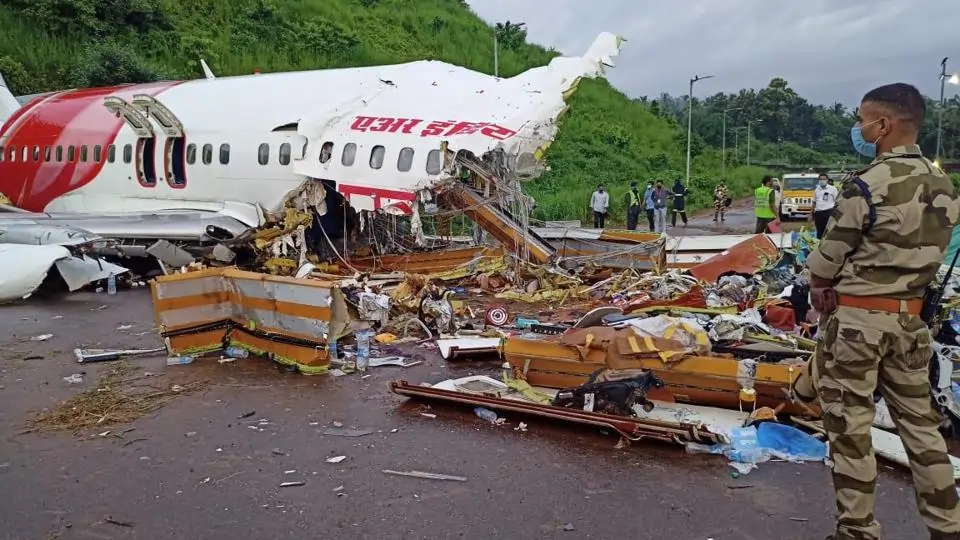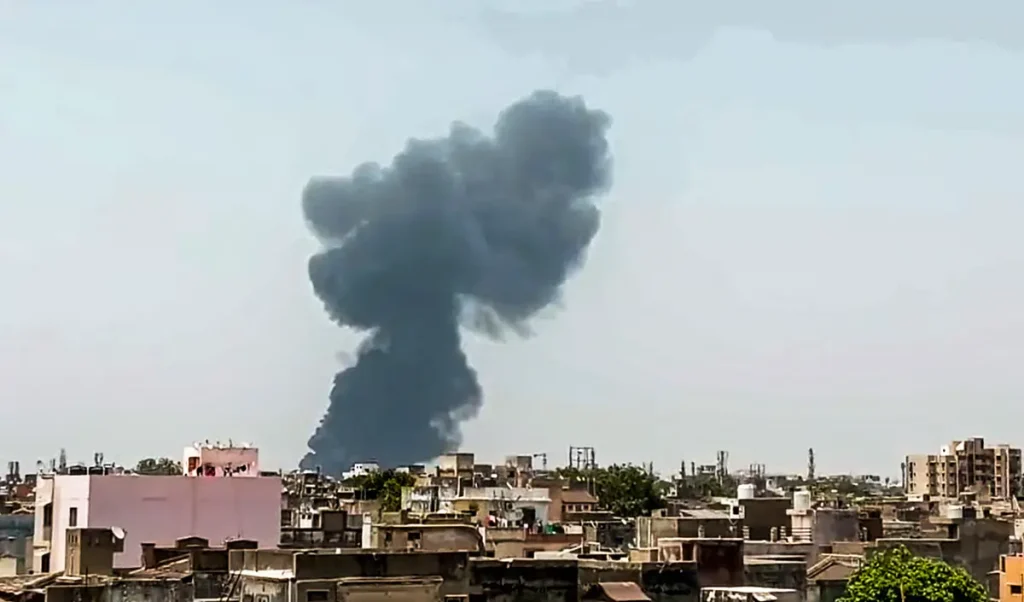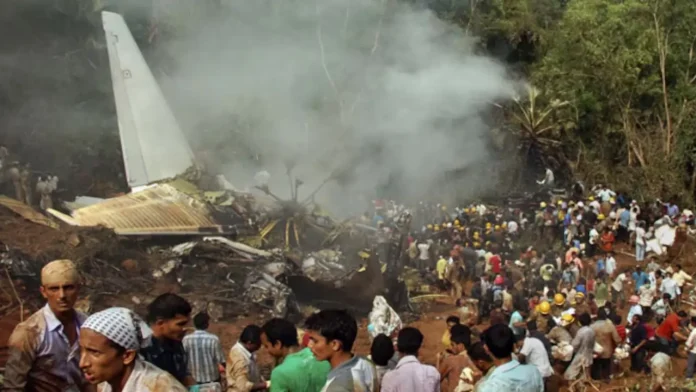On June 12, 2025, Air India Flight AI171, a Boeing 787‑8 Dreamliner with 242 people onboard (230 passengers, 12 crew), crashed into the Meghani Nagar neighbourhood in Ahmedabad just minutes after takeoff from Sardar Vallabhbhai Patel International Airport.
- It was bound for London Gatwick.
- Wreckage hit a doctors’ hostel, injuring residents and triggering intense firefighting.
- Rescue teams recovered 30 bodies with hundreds feared trapped under rubble
Aircraft & Flight Details
- Flight AI171 departed at 1:38 PM IST; five minutes later, crew issued mayday, then radar and communications dropped
- It was a Boeing 787-8, tail number VT-ANB, roughly 11 years old — the first fatal crash for the 787 series
- Onboard were 169 Indian nationals, 53 British, 7 Portuguese, 1 Canadian, plus 12 Air India crew
Casualties & Injuries
- 30 bodies confirmed; many more displaced or injured, including intern doctors at the hostel. Around 20 interns feared dead.
- Rescue operations are focused on locating survivors under wreckage.
- Some injured have been rushed to local hospitals; hotline numbers have been activated by Air India and civil aviation authorities
Rescue & Emergency Response
- Fire engines and NDRF teams rushed in; over 70‑80% of the site cleared initially.
- PM Modi, Home Minister Amit Shah, and Civil Aviation Minister Kinjarapu are in close monitoring and have asked state government for full relief efforts.
- Airport operations have been suspended temporarily; passengers redirected accordingly

Who Was Onboard?
- Former Gujarat CM Vijay Rupani is reported to have been traveling on board, but official confirmation is pending.
- Passengers included families, medical students, and international travelers, with 169 Indians, 53 Britons, 7 Portuguese, 1 Canadian, and 12 crew
What Raised Eyebrows? Cause & Investigation
- The DGCA will lead the probe, supported by Boeing’s technical team and Air India.
- Investigators will analyze black boxes, crew communications, aircraft maintenance, takeoff data, and eyewitness footage .
- Reports suggest a technical failure shortly after takeoff, though the specific fault remains unverified
Impact on Ground & Nearby Community
- The crash site hit a medical interns’ hostel—acute concern over safety and structural damage.
- Local residents reported a massive explosion, thick black smoke, and panic dollars raining on roofs .
- Damage assessments continue across homes, power lines, and local infrastructure—relief services are assisting people in the area.
Official Statements
- Air India Chairman N. Chandrasekaran expressed deep sorrow and promised full support to affected families.
- Civil Aviation Minister said all agencies are coordinated; emergency resources are underway.
- PM Modi and UK PM Keir Starmer voiced condolences and pledged support for victims and families
What Questions Are Users Searching?
1. Is Boeing’s 787 Dreamliner safe?
Yes—it had a strong safety record, with no previous fatal crashes until now .
2. Any survivors?
Not confirmed yet—rescue teams are working; chances are slim due to the explosion .
4. Will Boeing be held accountable?
If a manufacturing/design flaw is found, it could influence Boeing’s liability and rebuild trust.
Human Touch—Family & Medical Worker Statements
- Affected families are rushing to hospitals and airport helplines—many waiting for news of loved ones.
- Intern doctors, sharing space with the damaged hostel, are among the casualties; colleagues report chaotic rescues.
“If only the Mayday call could’ve been ‘Mayday, autopilot!’ — we’d all be on a plane to Gatwick right now.”
What Happens Next?
- Rescue focus: locating survivors, clearing the site safely.
- Investigative phase: DGCA, Boeing help decode black boxes and technical issues.
- Relief phase: Government will arrange compensation, counseling, logistics for families.
- Policy phase: FAA, ICAO, and Boeing may review procedures and safety protocols.

This Ahmedabad crash is the first fatal Boeing 787 incident, jolting India and global aviation. It involved 242 souls, a massive rescue effort, unverified fatalities, cutting-edge aircraft, and international scrutiny.
In the coming days, we’ll know more—about technical causes and human stories. But for now, rescue continues, families wait, and India’s aviation protocol prepares for aftershocks.


